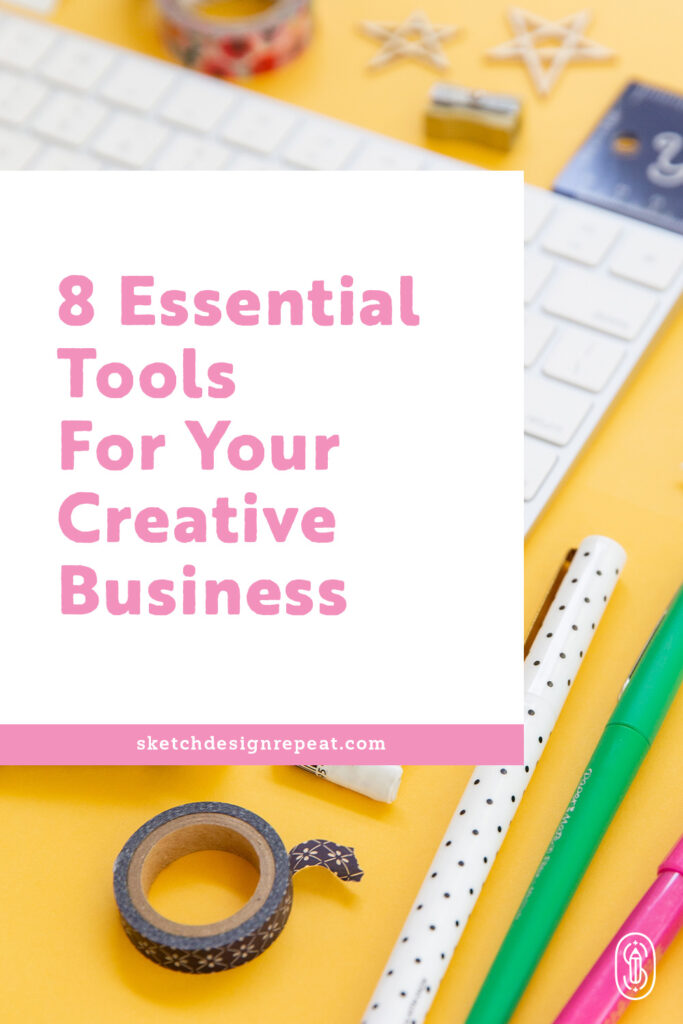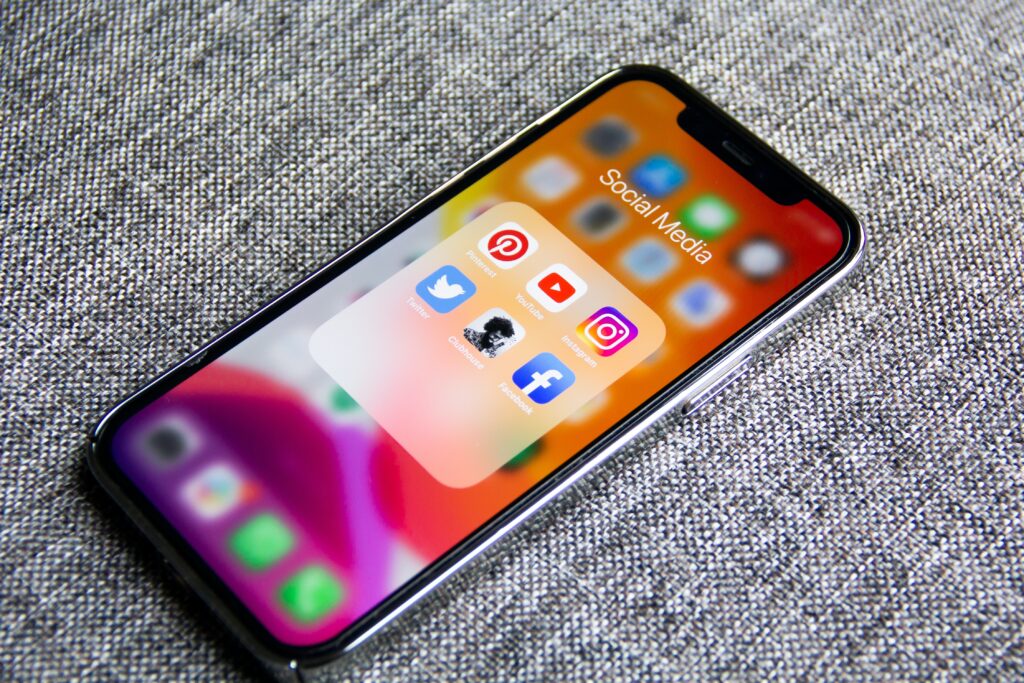When I decided to have a creative career, I was under the impression that all I needed was a drawing program and an Instagram account. Within a couple of months, I realized that there was more to running a creative business than a social media account and some art to go on it.
You need the right tools to stay organized, efficient, and creative.
Be it streamlining your creative process, collaborating with your team (if you have one), organizing your files in one place, or even just brainstorming ideas, you need to have these eight essential tools (categorized by purpose) in your arsenal.

1. Calendar
Calendars aren’t only for scheduling meetings — I use calendars for almost everything, from keeping reminders to blocking off time for specific tasks. A couple of years back, I was juggling multiple projects at the same time and struggling to keep track of deadlines. I soon realized that my life and business were so disorganized, that I’d written myself a recipe for disaster.
A few productivity videos on YouTube later, I was sold on the idea of using a calendar to stay on top of my schedule. Digital or physical — choose a calendar that works for your needs. I prefer the Google calendar because it’s free and I can easily create events, set reminders, and color-code different tasks. I use it extensively for batching my work and time-blocking. This helps me visualize my workload and plan my days more efficiently.

2. Project Management
As creatives, we are always working on a few different projects simultaneously. I’ve always looked for project management tools that can allow me to focus and prioritize, instead of getting overwhelmed. I’ve tried the likes of Trello, Asana, and Airtable, and they all have their strengths.
I find myself more inclined towards Airtable because it combines the best of spreadsheets and databases, making it an incredibly versatile and powerful tool for any creative business. With Airtable, I can easily create custom databases for each of my projects, track timelines, jot down random design ideas, save email templates, keep drafts of my social media captions, and maintain details of my entire portfolio.
3. Website Builder
If you’re happy housing your art on a social media platform, then skip this part by all means. But I’ve always maintained that having your own website is essential, be it for showcasing your design portfolio or having an online store.
However, as someone without any coding experience, I’ve done my fair share of research on DIY website builders. What’s a DIY website builder you ask? They are user-friendly platforms that allow you to create a professional-looking website without any coding knowledge. Think Squarespace and Wix, or even Adobe Portfolio.
I’ve used Squarespace in the past and I currently house my website on Wix; I have found them both easy to use. Identify all the things you want your website to do, and then study the similarities and dissimilarities between a few different website builders. Then compare their pricing plans before you choose one that’s right for your creative business.

4. Social Media Marketing and Scheduling
For a lot of us, social media is an important part of our marketing and branding strategy. It is imperative that we select social media platforms that can fit into that strategy without taking a toll on our time and energy.
Out of the social media platforms out there, Facebook and Instagram are popular choices. Whatever you choose, stick to one or two instead of doing it all. Instagram is the only app I use and it suffices to get my work out there and engage with a community of like-minded people.
Another tool that goes hand-in-hand with a social media platform is a scheduling app. Now, you could spend time choosing your photos, writing captions, and posting them every day. Or you could batch your art, reels, and captions and schedule them well in advance. Believe me when I say this, batch scheduling your posts can save you a lot of time.
I’ve tried apps like Later and Planoly, and they’re great if you want to plan a visually cohesive feed. They also provide analytics that can give great insight into the posts that perform better than others. I’ve lately switched to Adobe Express since I already have an Adobe subscription and I am not too hung up on either a cohesive Instagram feed or detailed social media analytics.
Related Article: 5 Steps to Set Up Your Surface Design Business
5. Pinterest
Pinterest marketing is often considered to be a form of social media marketing. However, I feel it deserves a dedicated space in this blog post. As artists, we’re always looking for inspiration, and Pinterest lives up to its reputation as one of the best visual search engines out there. In fact, I create mood boards on Pinterest every time I work on a new design project.
But inspiration boards aren’t the only reason to use Pinterest. With a smart SEO strategy in place, Pinterest can be one of the most effective ways to drive traffic to your website. What this means for your business is that you can use high quality vertical images of 2:3 aspect ratio (of either your art or your products) to attract your target audience.
A lot of art directors scour Pinterest and if you’re doing your marketing strategy right, chances are that some of them will find you on the platform and then visit your website to see more of what you do and you could have a potential client.

6. Social Media Graphics
You might be thinking “I am just going to post my art, why do I need social media graphics?” Well, you do need to add a watermark or a logo to your art. Sometimes, you might need an image announcing a new blog post or a Spoonflower sale. Social media aside, you will need to create portfolio sheets and Pinterest images.
Choose graphic design software that ticks all the boxes for you. It could be Photoshop, Illustrator, or even a free, easy-to-use option such as Canva. When you’re batching social media posts or pins for Pinterest, these tools can be a godsend.
I love using Canva because not only is it free, but also because it is so versatile. It has a user-friendly interface and a wide range of templates and design elements, so that you can create eye-catching graphics for all your social media platforms in a matter of a few minutes.
7. Email Marketing
As much as we wish we could post our art on Instagram and call it a day, we all know that social media sites are hard work. Changing formats, dynamic algorithms, and the need to be constantly and consistently available on the app, can be taxing. So much effort for a platform that we can’t call our own!
Email, on the other hand, is something you own. Taking some time and putting in effort to build a newsletter list (either for those interested in buying your products or for art directors) can be fruitful in the long run.
For creating and sending out newsletters, you need an email marketing platform. Convertkit, Flodesk, and Mailchimp are some of the popular ones. I use Convertkit, but again, each platform has their pros and cons, and your choice should take into consideration your requirements.
8. File Sharing and Storage
You can’t deny the fact that you need a place to house your design files, contracts, blog posts, product photos, and the like. You also can’t negate the possibility that your computer will crash one day, and you will be left lamenting the loss of all those important files. It has happened to me, more than once.
It’s always a good idea to explore other storage options. I use an external hard drive but I also use Google Drive for saving a copy of those files on the cloud. Dropbox is a great alternative to Google Drive and is useful for sharing files as well. I prefer Google Drive since I use Google Docs and Sheets quite often, and it saves me the hassle of saving documents offline and then uploading them to the cloud.
This list isn’t exhaustive — there are a lot of tools and apps that serve a wide range of purposes. As a creative business owner, identify what your priorities are and what you need help with the most.
If you tend to get carried away with your time and projects take a long time to finish, you might want to consider a time-tracking app. Are you an online educator, or do you post a lot of videos on social media? Finding good video editing software is the way to go. Do you want to draft and send emails at a particular time of the day or the week? Look for an email add-on that helps you schedule your emails.
Choose your tools depending on what you want to focus on in your business. So tell us, what are some of your go-to tools for your business?

Written by Priyadarshini Das Sharma
Website: www.thehappypost.com
Instagram: @antheadesignstudio
Priyadarshini is the founder of Anthea Designs and The Happy Post. She is passionate about art, organization, productivity, and mental health, and loves sharing her knowledge. When she’s not working on her next masterpiece, Priyadarshini loves spending time with her daughters and three rescue dogs.
Thank you so much for such great tips!
Great reminder for me re: social media graphics & Pinterest.
Thank you, Priyadarshini, for this post. Most helpful! 🙂